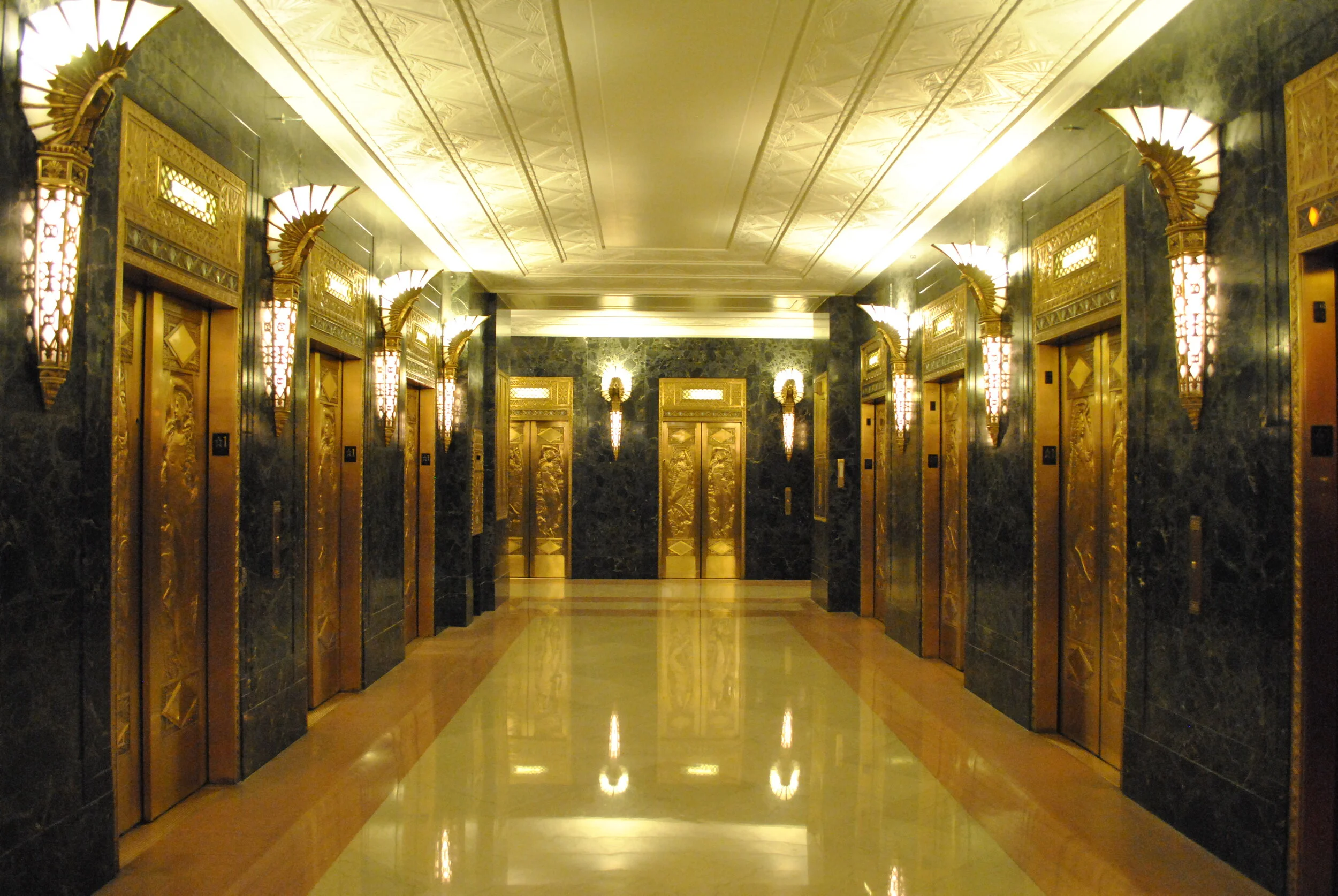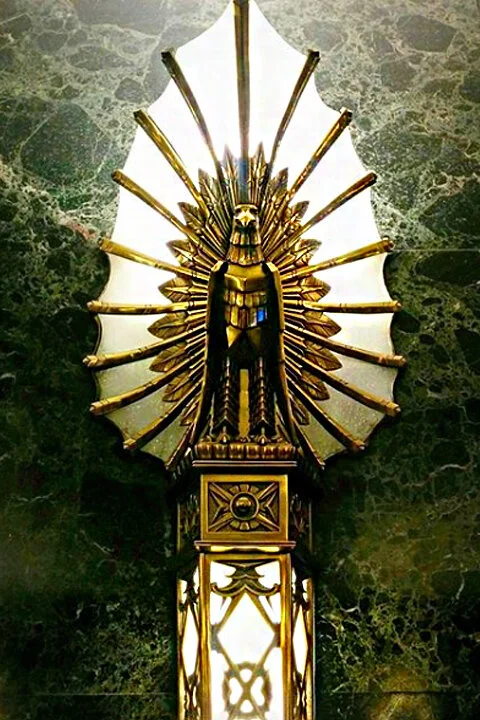A Deco Tribute to History: One North LaSalle Street
If you’ve ever seen a movie set in 1920s/30s Chicago, you’ve undoubtedly glimpsed some of the many elegant Art Deco buildings sprinkled throughout the downtown area. Take a walk down LaSalle Street, and it’s like being transported through time, back to a time when money seemed plentiful, potential seemed limitless, and industry was booming. The Art Deco style was a style that looked forward while other styles looked back, inspiring people to move forward with the engine of industrial progress. Take a look at any Art Deco building, and chances are you will see this emphasis on progress communicated in its form: uninterrupted vertical lines symbolizing people’s soaring potential in the industrial age; machine-like repetition of the building’s details, lines of windows seemingly punched out on an assembly line. Mies van der Rohe, a 20th-century Modernist architect, famously said, “Architecture is the will of an epoch translated into space.” The Art Deco style truly embodies its time.
One North LaSalle was one of the last Art Deco buildings — indeed, one of the last, great Chicago skyscrapers — built before the architectural dry spell brought about by the Great Depression and WWII. It was very much a last hurrah for the city at the end of the Roaring ‘20s: construction was officially completed in 1930, mere months after the 1929 Stock Market Crash. Designed by the firm of Vitzthum & Burns, its clean vertical lines, streamlined façade, and setbacks typify the Art Deco style. But the exterior is just the icing on the cake–the interior is truly magical. It’s one of those hidden spaces passed by busy Chicagoans every day, and I would have passed it as well, had I not (fortunately) turned my head at just the right moment to discover the gorgeous Art Deco entryway, which piqued my curiosity. Throwing any concern about the legal ramifications of jaywalking aside, I hurried across the street to see what treasures lie inside.
Just as luxurious as I’d expected, the lobby didn’t disappoint. Deep green marble walls, polished bronze, and the elegant intricacies of Art Deco detailing — sharp angles, chevrons, and clean geometry in the stunning metalwork over the doors and air registers. This was a lobby that sought to communicate wealth and progress, ironically completed at a time when such ambitions came to a screeching halt.
One North LaSalle is not only a gorgeous model of the Art Deco style, but it is also historically significant: it is a Chicago Landmark and on the National Register of Historic Places, and built near the presumed site of René-Robert Cavelier, Sieur de LaSalle’s 17th-century camp. It is for this reason that the details — both outside and inside — have as a theme those early explorers and their interaction with Native Americans in this region. You’ll see, for example, that rather than the corn and wheat that you see on the Chicago Board of Trade, or the prairie flowers that you see in a nearby bank of the same era, here you have stylized bunches of feathers like you might see in a headdress or topping a calumet. The sconces are not just any old bird: they’re specifically Native American thunderbirds, a popular figure in many tribes’ mythologies.
One thing that admittedly throws my guests off when they look at the stunning elevator bank is that the elevator doors are decidedly not part of this theme, but rather seem classically themed. And here I tell them that yes, the figures on the doors are not a shout-out to the history of the location, but to the building’s beginnings as a banking building. You’ve got two classical allegorical figures representing “Prosperity” and “Abundance,” two things you would certainly wish for in a banking building no matter when it’s built, but especially one that’s nearing completion when the Stock Market crashes.
Located at the northeast corner of Madison and LaSalle, in the heart of Chicago’s financial district, this building is part of what makes the “LaSalle Street Canyon” so imposing and impressive. When you visit, make sure to get a view of this building’s front door from across the street — it is truly inspiring.







